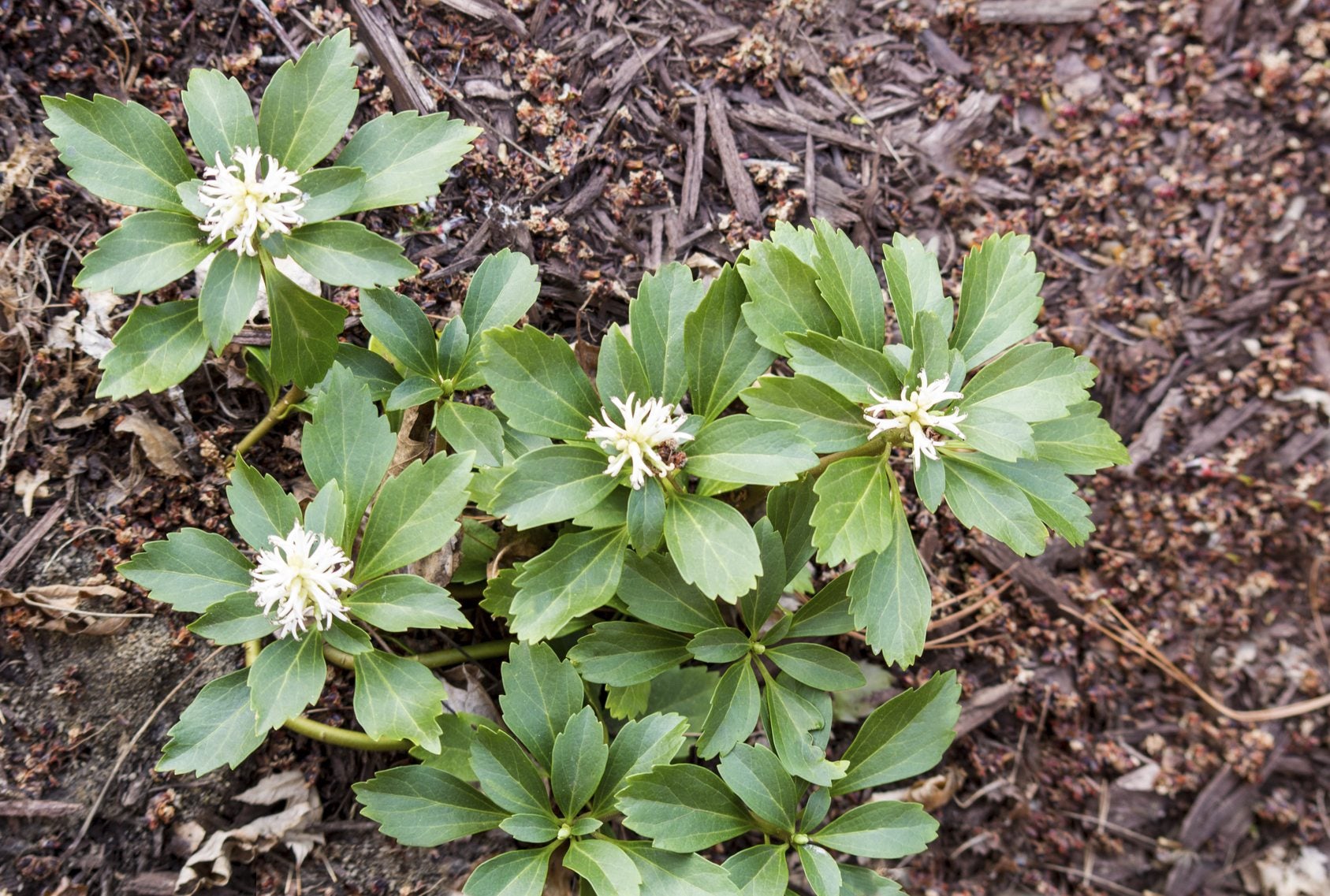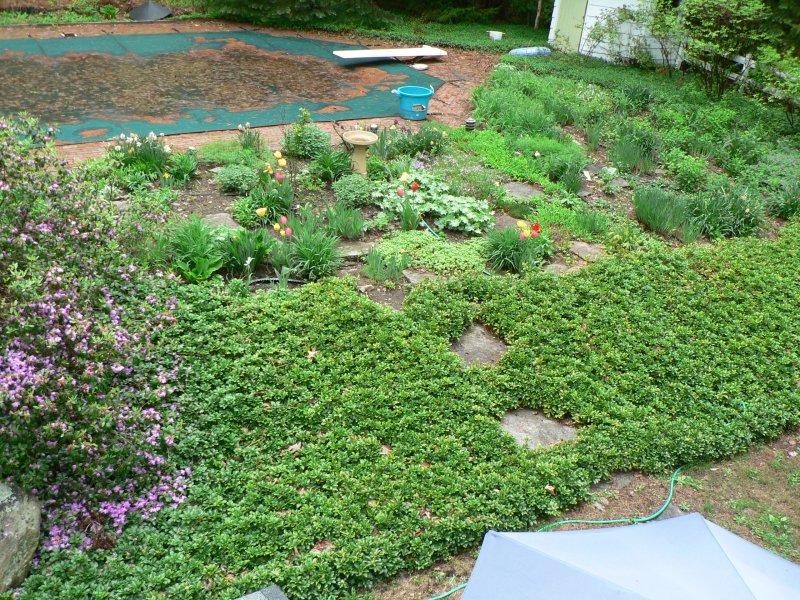To get rid of pachysandra, manually pull out the plants or apply a non-selective herbicide. Be sure to follow up with regular maintenance to prevent regrowth.
Pachysandra may seem appealing with its lush green leaves, but it can quickly become invasive. Many homeowners struggle with this hardy ground cover that spreads aggressively. Eradicating pachysandra requires a strategic approach, as it can easily choke out other plants.

Credit: www.youtube.com
Neglecting it can lead to an overwhelming carpet of foliage that dominates your garden. Understanding the best methods for removal is crucial for restoring balance to your landscape. Whether you prefer organic options or chemical solutions, knowing how to tackle this resilient plant will help reclaim your outdoor space. Let’s explore effective strategies for eliminating pachysandra once and for all.
How to Get Rid of Pachysandra : Step by Step Guide
Introduction To Pachysandra
Pachysandra is a popular ground cover plant. It has shiny, dark green leaves. This plant can grow in shaded areas. It spreads quickly and can be hard to control. Many people like its low maintenance needs.
Removing Pachysandra can be necessary for various reasons. It may overtake other plants in your garden. This can lead to a lack of biodiversity. In some cases, it can attract pests. A garden full of Pachysandra may not look appealing.
Consider the following reasons for removal:
- Invasive nature: It spreads rapidly.
- Competition: It competes with other plants.
- Pest attraction: It can draw unwanted insects.
- Aesthetic concerns: It may not fit your garden’s design.
Preparation For Removal
Removing pachysandra requires the right tools and materials. Gather items such as:
- Gloves to protect your hands.
- Shovel for digging up the plants.
- Rake to clear the area.
- Trash bags for disposal of debris.
- Garden hoe to cut through roots.
Safety is important during this process. Wear safety glasses to protect your eyes. Use sturdy shoes to avoid injuries. Long sleeves and pants help prevent skin contact with plants.
Always keep a first aid kit nearby. This way, you can address any minor injuries quickly. Stay hydrated and take breaks as needed.
Manual Removal Techniques
Digging out the plants is an effective way to remove Pachysandra. Start by using a shovel or spade. Carefully dig around the plants to avoid damaging nearby roots. Lift the entire plant out of the ground. Make sure to get all the roots. Leaving roots can cause the plants to grow back.
Smothering with mulch is another useful technique. Apply a thick layer of mulch over the area. Use at least three inches of mulch for best results. This will block sunlight and water, which Pachysandra needs to survive. Check the area regularly and replenish the mulch as needed.
Chemical Methods
Choosing the right herbicide is crucial for effective pachysandra removal. Look for products that contain glyphosate or triclopyr. These ingredients target pachysandra specifically without harming other plants.
Application tips can make a big difference. First, apply the herbicide on a dry day. This ensures better absorption. Use a spray nozzle to target the pachysandra directly. Avoid overspray on nearby plants.
Always wear gloves and a mask for safety. Follow the instructions on the product label carefully. Reapply if necessary, especially after heavy rains.
Natural Remedies
Try a vinegar solution to eliminate pachysandra. Mix equal parts of water and vinegar. Spray the mixture directly on the plants. The acidity in vinegar will harm the leaves. It’s best to do this on a sunny day.
Another effective method is boiling water treatment. Boil a pot of water and carefully pour it over the plants. The heat will kill the pachysandra quickly. Take care not to pour it on other plants. This method is safe and chemical-free.
Maintaining The Area After Removal
After removing Pachysandra, focus on soil rehabilitation. Start by testing the soil’s pH level. Adjust it to a neutral range for better plant growth.
Add organic matter like compost to improve soil structure. This helps retain moisture and nutrients.
For preventing re-growth, cover the area with landscape fabric. This blocks sunlight and stops new plants from growing.
Regularly monitor the area for any pachysandra sprouts. Remove them immediately to prevent re-establishment.
Consider planting native plants that thrive in the area. They can fill the space and reduce the chance of weeds.
Alternative Ground Covers
Several eco-friendly options can replace Pachysandra in your garden. Consider Creeping Thyme as a low-growing alternative. This plant is drought-resistant and produces lovely flowers. Ajuga is another great choice. It has attractive foliage and spreads quickly.
Foamflower offers beautiful blooms and thrives in shady areas. Vinca Minor, or periwinkle, is also a popular ground cover. It features pretty purple flowers and is easy to maintain.
| Plant Name | Benefits |
|---|---|
| Creeping Thyme | Drought-resistant and flowering |
| Ajuga | Attractive foliage, fast spreading |
| Foamflower | Beautiful blooms for shady areas |
| Vinca Minor | Easy maintenance, pretty flowers |
Planting these options is simple. Choose a sunny or shaded spot. Prepare the soil by loosening it. Space plants according to their growth needs. Water them regularly for the first few weeks.

Credit: www.gardeningknowhow.com

Credit: m.youtube.com
Frequently Asked Questions
How Can I Effectively Remove Pachysandra?
To effectively remove pachysandra, start by manually pulling out the plants, ensuring you remove the entire root system. Herbicides can also be used; select one specifically designed for ground cover. Always follow the manufacturer’s instructions for application rates and safety precautions.
Regular monitoring will help prevent regrowth.
What Is The Best Herbicide For Pachysandra?
The best herbicides for pachysandra contain glyphosate or triclopyr. These chemicals are effective against invasive ground covers. Make sure to apply them on a dry, calm day to minimize drift. Always read and adhere to the label instructions for safe and effective use.
When Is The Best Time To Kill Pachysandra?
The best time to kill pachysandra is during its active growth phase, typically in late spring or early summer. This timing allows herbicides to be absorbed more effectively. Avoid treatment during extreme weather conditions to ensure optimal results. Consistent follow-up can help manage any remaining plants.
Can I Smother Pachysandra With Mulch?
Yes, smothering pachysandra with mulch can be effective. Apply a thick layer of organic mulch, like wood chips or straw, to block sunlight. This method deprives the plants of necessary light, promoting their decline. However, be patient, as it may take time to see results.
Conclusion
Getting rid of Pachysandra requires patience and persistence. Start with manual removal for small patches. For larger infestations, consider using herbicides carefully. Regular maintenance will prevent re-growth. By following these steps, you can reclaim your garden and restore its beauty.
Enjoy a vibrant landscape free from unwanted plants.

